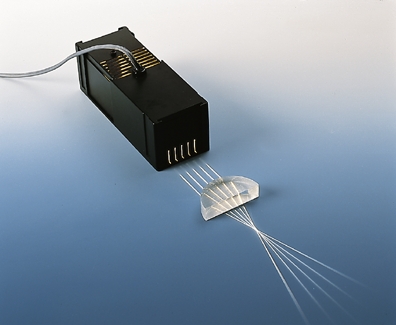Principle
In conjunction with the experiments on the refraction of light, this experiment is of particular importance. Knowledge of the law of refraction is strengthened and transferred to new contexts. At the same time, in this experiment, the students become familiar with the lenses which are most frequently used in optical apparatus.
The main focus of the first part of the experiment concerns the observation of the course of parallel, incident light beams converged by a convex lens and strengthening the concept of focal length.
In the second part of the experiment, the path of three selected light beams is experimentally investigated and the general prerequisites for the understanding of image formation, to be considered later, are laid down.
The second part of the experiment is more demanding in terms of the abilities and experimental skills required of the students. Both experiments can be seen as indivdual units and can, likewise, be carried out separately. This is to be recommended in the interest of conscientious performance and further strengthening of the students experimental skills.
Nevertheless, individual group work can also be recommesded (each group investigating the course of different, selected light beams then, at the end of the experiment, the data is collected to give a total result).
Benefits
- Multifunctional light box - All-in-one: Can be used for geometric optics on the table, colour mixing and on an optical bench
- Extension with others sets at anytime, no additional light sources needed, recognition value for students
Tasks
How does light pass through a lens?
- Investigate the passage of light through a planoconvex lens.
- Investigate the passage of selected light rays falling on a planoconvex lens.



